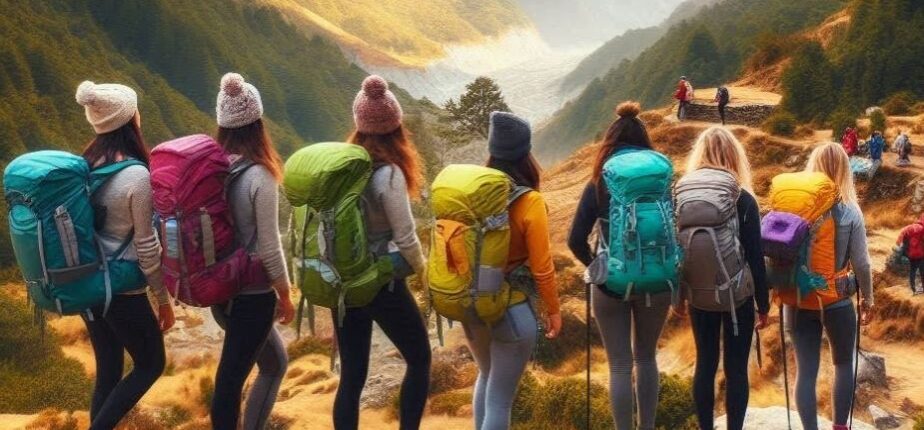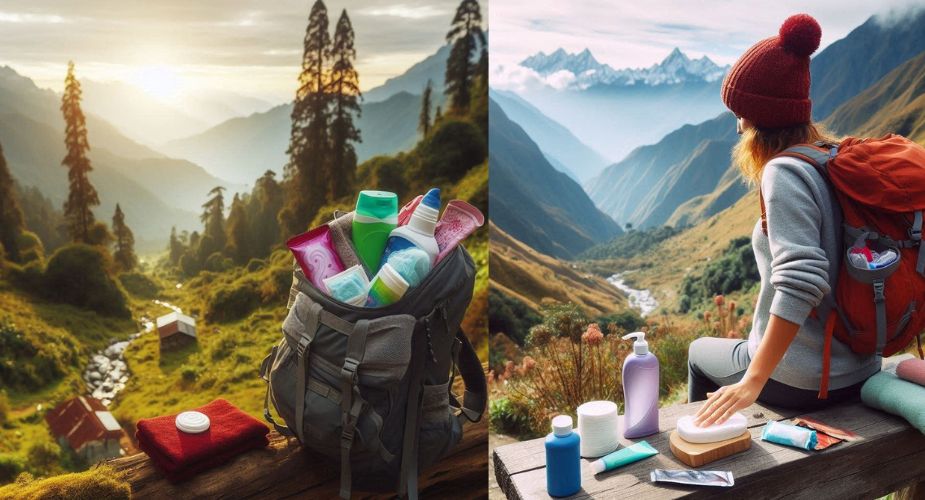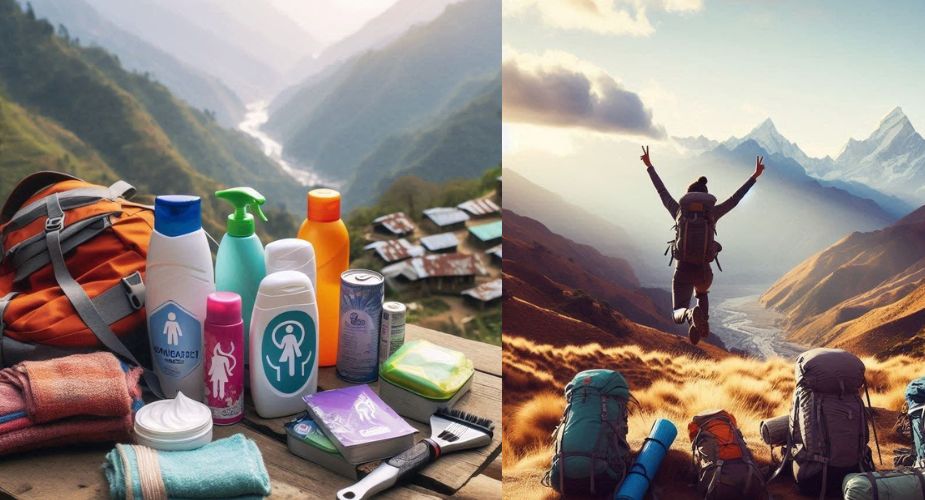Essential Tips for Maintaining Women’s Hygiene During a Trek in Nepal: Stay Fresh and Healthy on the Trail


Women’s Hygiene During a Trek involves maintaining cleanliness, managing menstruation, and staying healthy in remote, challenging environments. Trekking through Nepal’s breathtaking landscapes is an experience of a lifetime, but for women, it can also pose unique challenges when it comes to maintaining hygiene. From unpredictable weather to long days on rugged terrain, keeping up with hygiene while staying fresh and healthy can sometimes be tricky. However, with the right preparation, you can enjoy your trekking adventure in Nepal while feeling clean and confident.
Here are some essential tips to help women maintain proper hygiene during a trek in Nepal:
-
Pack the Right Essentials
When planning your trek, make sure to carry a personal hygiene kit that includes all the basics you’ll need to stay clean on the trail. Some must-haves include:
Biodegradable wet wipes: These are perfect for freshening up when water is scarce.
Hand sanitizer: A quick and easy way to clean your hands before eating or after bathroom breaks.
Menstrual hygiene products: Whether you prefer tampons, sanitary pads, or menstrual cups, make sure you bring enough for the duration of your trek.
Travel-sized soap: Biodegradable soap is great for washing your hands, body, and even clothes.
Ziplock bags: Useful for storing used sanitary products until you can dispose of them properly.
-
Menstrual Hygiene Tips
Nepal’s trekking trails often take you through remote areas where access to toilets and water can be limited. Managing menstrual hygiene on the trail can be daunting, but with proper planning, it doesn’t have to be stressful.
Consider using a menstrual cup: Menstrual cups are eco-friendly, take up less space, and can be reused throughout your trek. They require less frequent changes and don’t produce waste like disposable products.
Tampons and pads: If you prefer using tampons or pads, be sure to pack enough for your entire trip, along with small disposal bags. Always carry used products with you in a sealed, odor-proof bag and dispose of them properly when you reach a suitable facility.
Stay dry: Keeping yourself dry during menstruation is essential to avoid discomfort. If you’re using pads, change them regularly, even if you’re trekking long hours.

-
Stay Hydrated and Nourished
Drinking plenty of water is vital for your overall health, especially during high-altitude treks. Hydration also plays a key role in maintaining hygiene. Staying hydrated helps with regular bodily functions and prevents issues like urinary tract infections (UTIs) that can arise due to dehydration.
Make sure to:
Carry a refillable water bottle and use water purification tablets or a portable filter to ensure your water is clean.
Avoid drinking too much caffeine, which can dehydrate you and lead to frequent bathroom breaks in areas with no facilities.
-
Bathroom Breaks on the Trail
Trekking in Nepal often means limited access to bathrooms, especially in remote regions. You’ll likely have to “go” in nature from time to time, so knowing how to manage these situations hygienically is crucial.
Toilet paper: Always carry your own supply, as many tea houses and rest stops won’t provide it.
Feminine wipes: These are great for staying clean and fresh after bathroom breaks.
Pack out waste: In sensitive environments, you should pack out used toilet paper and sanitary products in a sealable bag to protect the environment.
Use pee funnels: For some women, pee funnels are a convenient way to urinate while standing, especially in areas with limited privacy.
-
Stay Clean on the Go
You may not have access to showers every day, but there are ways to keep yourself feeling clean and comfortable.
Wipe down daily: Use biodegradable wet wipes to clean your face, underarms, and other areas as needed. This helps you stay fresh, even if you haven’t had a chance to shower.
Change into dry clothes: After a long day of trekking, changing into dry clothes at night can make a big difference in your comfort and hygiene. Always have a fresh set of clothes to sleep in.
Foot care: Trekking means a lot of walking, so it’s important to take care of your feet. Wash them whenever possible, and keep them dry to avoid blisters and infections.
-
Choose Breathable Clothing
Your clothing choice can greatly affect your hygiene and comfort. Opt for lightweight, moisture-wicking fabrics that allow your skin to breathe and stay dry. Merino wool and quick-drying synthetic materials are great options for trekking. Avoid cotton, as it tends to retain moisture and can lead to discomfort and chafing.
-
Respect Local Culture
Nepal is rich in cultural diversity, and many of the areas you’ll trek through hold strong traditional values. While maintaining your hygiene, be mindful of local customs and modesty. Dressing modestly and being discreet with your hygiene practices will help you stay respectful and comfortable throughout your journey.
Using Contraceptive Pill
During multi-day treks in remote areas like the Himalayas, some female trekkers may choose to avoid the inconvenience of managing their menstrual cycle by using contraceptive pills to delay or skip their periods. This can be especially useful on challenging trails where access to proper sanitation, privacy, or the ability to dispose of menstrual products may be limited.
How Does This Work?
Certain types of contraceptive pills, such as combination birth control pills, allow women to skip their period by continuing to take the active hormone pills instead of the placebo or break week. This can suppress menstruation for the duration of the trek, offering added comfort and peace of mind.
Why Consult a Doctor First?
While this approach might seem convenient, it is essential to consult a healthcare provider before using birth control pills to delay menstruation. Here’s why:
Health Risks: Not all women respond the same way to hormonal contraceptives. Some may experience side effects such as nausea, headaches, mood changes, or spotting.
Suitability: A doctor can assess whether using contraceptive pills in this way is appropriate based on your individual health history, lifestyle, and any underlying medical conditions.
Proper Guidance: Your healthcare provider can give you specific instructions on how to safely skip your period, as well as suggest the right type of contraceptive for your body.
Long-Term Use Considerations: If you’re already on birth control, your doctor can guide you on how to manage it during the trek. If you plan to start taking pills solely for your trek, you’ll need to begin the medication in advance, not just during the trek.

Alternatives to Skipping Periods
For those who prefer not to use contraceptive pills, there are plenty of ways to manage menstrual hygiene while trekking, such as menstrual cups, tampons, or biodegradable sanitary pads. These can be just as effective and, with proper planning, can be relatively easy to use even in remote areas.
In conclusion, while some trekkers choose to use contraceptive pills to skip their periods, it’s crucial to consult your doctor before making this decision. Your health and well-being should always come first, and having the right information ensures you’re making the best choice for your body during your trek.
FAQs
-
What is the best way to manage periods during trekking in Nepal?
The best way to manage periods during trekking is by using a menstrual cup, as it is eco-friendly, requires fewer changes, and produces less waste. If you prefer pads or tampons, ensure you pack enough and bring small disposal bags to pack out used products.
-
How do I stay clean without access to showers?
You can stay clean by using biodegradable wet wipes to freshen up daily, especially on your face, underarms, and feet. Changing into clean clothes at night and keeping yourself dry will also help maintain your hygiene.
-
What should I do if I get a urinary tract infection (UTI) during the trek?
Stay hydrated, and if you feel the symptoms of a UTI (painful urination, urgency), try to increase your water intake. If symptoms persist, seek medical help at the nearest clinic or hospital. Always carry a small first-aid kit with basic medications, including treatments for UTIs, just in case.
-
Are there proper disposal facilities for sanitary products on trekking routes?
On many remote trekking routes, disposal facilities may not be available. It’s important to pack used sanitary products in odor-proof, sealable bags and dispose of them when you reach proper waste bins in tea houses or lodges.
With these tips, you can trek through Nepal’s stunning landscapes while feeling fresh and confident. Proper hygiene will ensure that your adventure remains enjoyable and comfortable, allowing you to fully immerse yourself in the beauty of the Himalayas.







